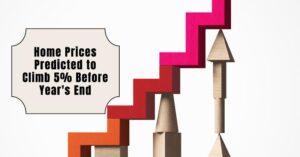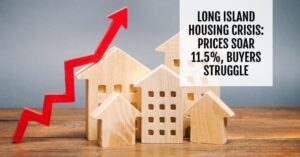As the housing market continues to evolve post-pandemic, many homebuyers are looking for answers to the pressing question: Which cities have more housing stock than before the pandemic?
In a surprising turn of events, a dozen major metropolitan areas have reported greater availability of homes compared to the levels seen from 2017 to 2019, according to a recent analysis by Realtor.com. This article explores these cities, providing insights into their housing trends, median prices, and regional characteristics that may appeal to prospective buyers.
Which Cities Have More Housing Stock Than Before the Pandemic?
The pandemic brought significant disruption to the housing market, leading to an unprecedented shortage of available properties. Even today, July 2024 data reveals that while active listings have increased by over 36%, the overall inventory is still 30.6% below pre-pandemic levels from 2017 to 2019. However, positive changes are evident in certain cities, marking a more favorable scenario for homebuyers striving for variety and choice in their housing options.
Cities With More Housing Stock
Here’s a closer look at the 12 metropolitan areas experiencing a surge in housing inventory:
- Austin, TX
- Jump in Housing Stock: 35.5%
- Median List Price: $539,530
- The Lowdown: A tech hub with a vibrant music scene and favorable outdoor activities. While it witnessed significant influx during the pandemic, the current slowdown has created more opportunities for homebuyers.
- San Antonio, TX
- Jump in Housing Stock: 34.3%
- Median List Price: $349,898
- The Lowdown: Known for its rich history and strong military presence, San Antonio combines cultural attractions with a thriving job market.
- Denver, CO
- Jump in Housing Stock: 26.7%
- Median List Price: $627,450
- The Lowdown: Nestled against the Rockies, Denver offers breathtaking views and a lively atmosphere, making it a sanctuary for nature lovers.
- Tampa, FL
- Jump in Housing Stock: 18.8%
- Median List Price: $424,950
- The Lowdown: With its sunny weather and famous beaches, Tampa is perfect for outdoor enthusiasts and sports aficionados.
- New Orleans, LA
- Jump in Housing Stock: 13.9%
- Median List Price: $329,000
- The Lowdown: Celebrated for its unique culture and world-class cuisine, New Orleans remains an attractive option for those seeking vibrancy.
- Dallas, TX
- Jump in Housing Stock: 12.7%
- Median List Price: $450,000
- The Lowdown: Dallas offers a blend of big-city amenities and an affordable cost of living, with a strong job market bolstering its appeal.
- Nashville, TN
- Jump in Housing Stock: 12.6%
- Median List Price: $568,900
- The Lowdown: Known as “Music City,” Nashville also boasts a low cost of living and exciting nightlife.
- Orlando, FL
- Jump in Housing Stock: 12.5%
- Median List Price: $442,241
- The Lowdown: A paradise for families, Orlando combines endless entertainment options with robust employment opportunities.
- San Francisco, CA
- Jump in Housing Stock: 10.0%
- Median List Price: $973,875
- The Lowdown: The tech powerhouse continues to thrive, attracting residents with its diverse neighborhoods and exceptional dining options.
- Jacksonville, FL
- Jump in Housing Stock: 7.5%
- Median List Price: $419,000
- The Lowdown: Jacksonville’s stunning beaches and strong economy make it an appealing location for homebuyers.
- Seattle, WA
- Jump in Housing Stock: 7.4%
- Median List Price: $779,975
- The Lowdown: Home to tech giants, Seattle provides ample job opportunities alongside a rich cultural heritage.
- Memphis, TN
- Jump in Housing Stock: 4.1%
- Median List Price: $347,175
- The Lowdown: Known as the birthplace of blues, Memphis offers low-cost living options while still being culturally rich.
The Impact of Increased Housing Stock
The increase in housing stock across these cities signifies more choices and opportunities for buyers. Economist Ralph McLaughlin stated, “It typically means more choice, more time, and, if large enough, more price cuts.” This shift could signify the beginning of a more balanced market, creating intrigue for those who have felt the weight of rising prices and the scarcity of homes in recent years.
Navigating the path towards homeownership can be daunting, particularly in a market shaped by the challenges of the pandemic. However, these 12 cities provide hopeful insights into the evolving landscape of housing availability.
Homebuyers are encouraged to consider these areas not only for their increased inventory but also for the lifestyle and community they offer. If you’re looking for opportunities to buy a home in a vibrant, growing city, the choices above are a great place to start.
ALSO READ:
- Housing Market Predictions for the Next 2 Years
- Housing Market Predictions for Next 5 Years (2024-2028)
- Housing Market Predictions 2024: Will Real Estate Crash?
- Housing Market Predictions for 2027: Experts Differ on Forecast
- Summer 2024 Mortgage Rate Predictions: Relief for Buyers?
- Top 10 Housing Market Predictions for the Summer of 2024











